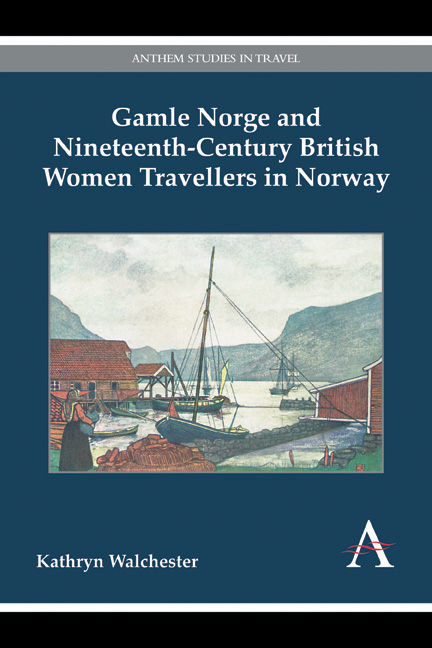Conclusions: ‘A Trunk of My Grandmother's Clothes’
Published online by Cambridge University Press: 05 December 2015
Summary
In Norway and its Fjords (published in 1907), faced with Adolph Tidemand's painting A Solitary Couple in the Museum of Art in Christiania, Marian Amy Wyllie writes,
It has an old-fashioned look about it, if it is permissible to call any work of art old-fashioned. As I studied it I felt as though I had opened a trunk of my grandmother's clothes, and was looking at a dress of a bygone period, – shall we say, early Victorian? The material is light, soft to the touch, and a little faded. The lace is most carefully stitched on, the whole emitting the faint smell of a bygone day.
In Wyllie's account Tidemand's representation of the Norwegian couple, and indeed his work in general, is feminised and shown as old-fashioned. In chapters 1 and 3 of this book I discussed the influence of Tidemand's paintings and the way in which they shaped the geographical imaginings of British women tourists from the 1840s onwards. Many women writers refer enthusiastically to seeing Tidemand's paintings and even the man himself. Mary Spence, for example, writing in 1868, writes effusively of the artist's depiction of Norwegian peasants ‘representing [Norwegian] life from its commencement to its end’ and reports seeing him on a steamer on the Hardangerfjord. Wyllie's reaction to A Solitary Couple draws attention to a wider change in understandings of Norway during the second half of the nineteenth century and how, by 1900, versions of Norway such as those painted by Adolph Tidemand, so popular and much cited earlier in the period, had now begun to feel ‘old-fashioned’ and ‘a little faded’ (20).
From the early years of the twentieth century, interest in Norway as a tourist destination diminished and the large numbers of tourists who had seen considerable developments in Norwegian infrastructure began to find other destinations, most especially in the beach resorts of southern Europe. Some historians, such as Snyder and Stonehouse, have noted an expansion of polar tourism, asserting that ‘Norway's polar tourism continued to expand until World War I, then enjoyed increasing popularity throughout the 1930s’.
- Type
- Chapter
- Information
- Publisher: Anthem PressPrint publication year: 2014

